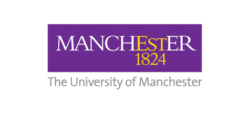

Peripheral nerve injuries (PNI) pose significant challenges in clinical treatment, often leading to functional impairments. Traditional interventions, such as nerve autografts, face limitations due to donor site morbidity and availability. To address these challenges, researchers at The University of Manchester and Nanyang Technological University explored innovative approaches to fabricate microgroove-patterned nerve guidance conduits (NGCs). These conduits facilitate guided axonal regeneration, improving outcomes for patients with nerve damage.
Using Boston Micro Fabrication’s (BMF) Projection Micro-Stereolithography (PµSL) technology, the team successfully developed high-resolution microgroove master molds that enabled the production of advanced nerve guidance conduits.
Current commercial nerve guidance conduits lack specific cell-instructive guidance cues, which are crucial for promoting directional nerve regeneration. The team needed a high-resolution, scalable, and cost-effective method to fabricate precise microgroove structures for enhanced nerve cell alignment and growth. Traditional photolithography techniques were too complex, time-consuming, and costly for their needs.
To overcome these challenges, the researchers leveraged BMF’s PµSL 3D printing technology to fabricate microgroove master molds with ultra-fine features (10-30µm resolution). These molds were then used to create flexible polydimethylsiloxane (PDMS) templates, which facilitated the casting of biocompatible polymer films for the nerve guidance conduits.
Why BMF?
BMF’s PµSL technology was the ideal choice for this application due to its ultra-high resolution (2µm). BMF’s 3D printer:
- Enabled the precise fabrication of microgroove structures, ensuring accurate cell alignment.
- Allowed researchers to iterate on different microgroove architectures efficiently.
- More accessible than traditional photolithography, reducing development costs.
- Eliminated complex processing steps, streamlining the production of biomaterial scaffolds for nerve regeneration.
3D Design & Printing of Master Molds
- Researchers designed microgroove structures in CAD software.
- BMF PµSL printers produced high-resolution 3D printed master molds.
PDMS Molding & Polymer Film Casting
- PDMS was poured onto the 3D-printed master molds and cured to create flexible molds.
- Biocompatible polymer films (Polycaprolactone (PCL) & Polylactic Acid (PLA)) were solvent-cast onto the PDMS molds.
Testing & Validation
- SH-SY5Y neuroblastoma cells were seeded onto the microgroove-patterned films.
- Researchers assessed cell viability, proliferation, and alignment to confirm the effectiveness of the design in promoting nerve regeneration.
The Results
- Precision Microgroove Structures: The BMF printed molds enabled the creation of highly detailed microgrooves, which enhanced axonal alignment and nerve regeneration.
- Improved Biocompatibility: The resulting PCL/PLA films demonstrated excellent surface morphology, roughness, and mechanical properties.
- Successful Cell Growth & Alignment: Live cell imaging confirmed high cell viability and directional growth along the microgrooves, proving the effectiveness of the design.
- Scalability & Efficiency: BMF’s 3D printing approach significantly reduced the cost and complexity of fabricating microstructured nerve guidance conduits.
“BMF’s PµSL technology provided the ultra-high precision we needed to fabricate microgroove master molds for nerve regeneration applications. The ability to rapidly prototype and scale our designs made this technology an invaluable tool for our research.”
— Dr. Hexin Yue, The University of Manchester
By leveraging BMF’s high-resolution micro 3D printing, researchers have taken a major step toward improving nerve regeneration treatments. The successful fabrication of microgroove-patterned NGCs demonstrates how ultra-precise additive manufacturing can drive innovation in biomedical applications.
